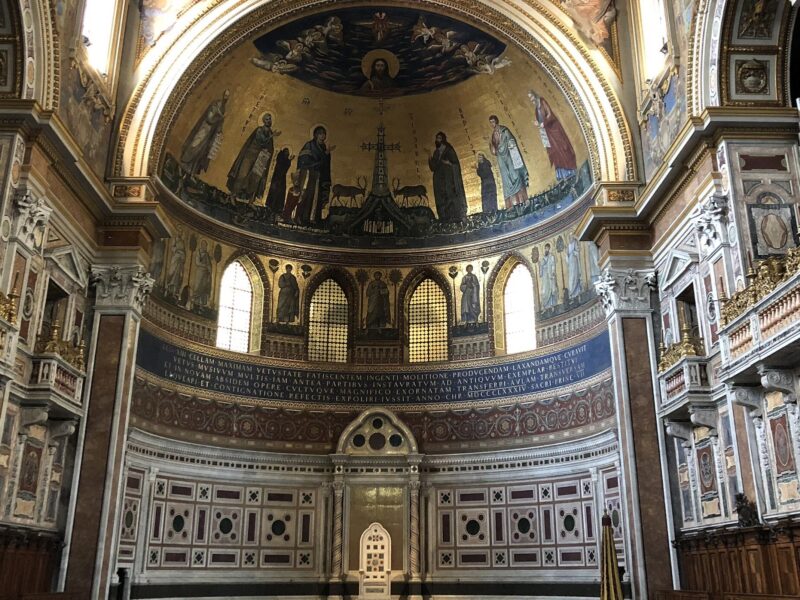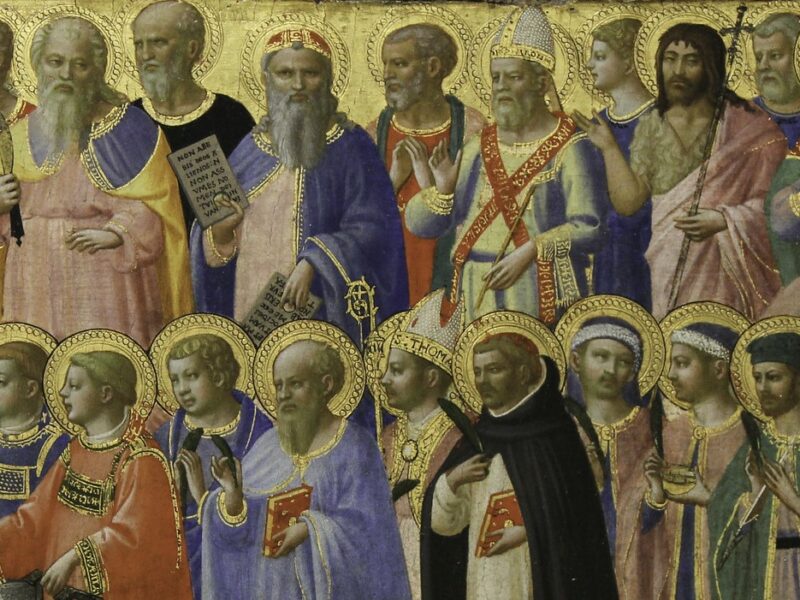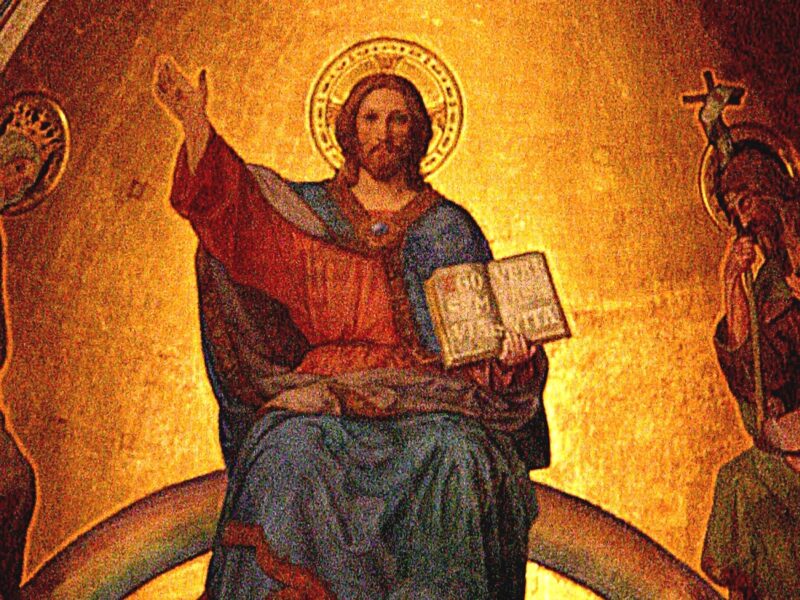
What’s in a Name?
Solemnity of Mary, Mother of God. Fr Fabian Radcliffe explores the meaning of the title ‘Mother of God’.
‘Holy Mary, Mother of God’: we say this whenever we say the Hail Mary. We say it so often that we can easily forget what a strong, startling, even shocking, phrase it is. How can Mary, or any woman for that matter, be literally Mother of God? God has no beginning. It is impossible for a human woman to be Mother of God. It sounds more like pagan myth than Christian doctrine.
But no: it is the Christian and Catholic faith that Mary is Mother of God; so it is necessary to understand it properly. The difficulty is overcome if instead we say that Mary is the ‘God-bearer’. This is in fact what the Greek word theotokos means: ‘God-bearer’, and therefore ‘Mother of God’, because the one she bears is God. This title had been given her in popular devotion from the second century onwards, and it was confirmed by the Council of Ephesus in AD 431 as a sure way of asserting the full divinity of her Son.
We also hear this phrase in all the Eucharistic Prayers. There it is linked with her title ‘Virgin’ in such a way that the two tend to be merged into the paradoxical title ‘Virgin-Mother’. Mary is indeed both virgin and mother. ‘Virgin’ expresses the initiative of God and therefore the full divinity of her Son. ‘Mother’ expresses Mary’s full cooperation and therefore also His full humanity.
In normal human terms being at once virgin and mother is impossible. Only the creativity of God could overcome this. So in the second Eucharistic Prayer, for example, though the punctuation makes us say: ‘Mary, the virgin-mother of God’, the sense is: ‘Mary the virgin, Mother of God’.
When we say ‘Mother of God’, therefore, we are not saying that Mary is the origin of the Godhead. We are saying that the one whom Mary bore is God: God-made-man, the eternal Word of the Father uniting Himself to our life so that we can share in His. The title is first saying something about the Son, rather than about the Mother. It affirms the Divinity of Christ. It compresses into one word all that is spelt out in the Nativity stories we hear, in the carols we sing and the cribs where we worship, in all that we ponder and contemplate, during the Christmas season.
At the same time ‘Mother of God’ is also saying something about Mary. It is from her that Jesus received his humanity, just as we all do from our mothers. He had her genes, her family likeness, traits of her character, all that he received from her in the womb, at the breast and throughout his upbringing. No other human being could be so close to God as she. Mary lies at the heart of the Christian mystery. To call her ‘Mother of God’ anchors her significance, and prevents us from sidelining her or elevating her into a quasi-goddess.
Her role as ‘Mother of God’ is unique; no one else was waiting in the wings to replace her. Moreover, it is a role which is essential but secondary: essential because without her fiat the Incarnation would not have happened; secondary because the initiative came entirely from God, not from her. But, though unique, she is still a true human mother. She is this by virtue of her own free choice in assenting to God’s message through the angel.
She, more than any, ‘heard the word of God and kept it’. And like all true human mothers, her relationship with her Son is permanent. She is eternally the mother of the Man who died and rose again, who now rests in the bosom of the Father, and draws us to himself in his Body.
In these matters, our words falter, but art can still be eloquent. One of the pictures in the Catholic Catechism is of a wood-carving of Mary by an Australian Aborigine. Mary is represented as a woman standing with hands clasped and arms encircling her womb. And in her womb is neither a foetus nor a near-born infant, but a fully formed youthful person, standing with legs apart, arms stretched up and out, head forward, eyes and mouth wide, radiating vitality, joy and welcome.
Mary encircles in her arms not just her own Son Jesus, but all those who are destined to have life in him, the whole human race. As the New Eve she is truly Mother of all the Living, and so is Mother of each one of us. Small wonder that she is also called ‘Mother of the Church’.
And we can go a step further. In his resurrection Jesus brings the glorified life within reach of the whole material creation. Through Jesus, God has promised us a ‘new heaven and a new earth’. This is dramatically represented by an icon at Mount Athos, which alas I have not seen but only read about. It is called ‘The Universe in the Womb of the Mother of God’. It shows the entire cosmos within the womb of Mary; for her Son is the one through whom all things came to be, and through whom all things will be made new in the heavenly Jerusalem.


